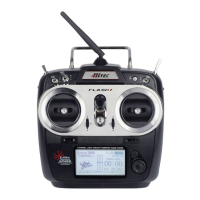6
Safety Information
Flying models can be dangerous if proper safety precautions are not followed. Here are a few critical
safety suggestions to keep you and others safe.
Are you experienced?
Flying models is not an intuitive process. Most accomplished model pilots were taught by another
modeler. We encourage you to seek help during your early ight experiences and if required, during
the building and radio gear installation process. Unlike some other hobbies, model airplane ying has
evolved into a social event. There are approximately 2,500 model aircraft clubs in America. Friendship and
help could be right around the corner. Ask your local hobby shop about clubs in your area.
Where to Fly
Having enough land for your own model airport is rare. Most of us y at club administrated model elds.
The local ball eld can be tempting but rarely has the space needed and your liability is high should you
damage property or hurt an innocent bystander. We recommend you y at a sanctioned model aircraft
eld.
Join the AMA
In America, the Academy of Model Aeronautics (AMA) is an organization of model enthusiasts that
provides resources and insurance to modelers. The AMA also lobbies the Government concerning
legislation that impacts modelers. Visit their web site for more information at www.modelaircraft.org.
Academy of Model Aeronautics
5151 East Memorial Drive
Muncie, Indiana 47302
Toll Free: 800 435-9262
Fundamental Guidelines for Safe Flying
1. Model aircraft can be dangerous when operated or maintained improperly.
2. DO NOT y over people or personal property.
3. DO NOT y in adverse weather conditions or high winds.
4. The equipment we use in the R/C hobby is sensitive electronic gear. Have receivers checked after
a crash before using them in another aircraft.
5. DO NOT y under the inuence of alcohol or drugs or if you are feeling ill.
6. DO NOT y near power lines or transmission towers.
7. If available use the Fail-Safe function to lower the throttle in case of a signal “lock-out.”
8. DO NOT y alone.
Safety Information Regarding Your Radio System
1. Make sure you do a range check before ying. If it does not range check satisfactorily, DO NOT y.
2. Know the condition of your batteries. Make sure they are suciently charged.
3. Make sure all control surfaces respond correctly to the input from the transmitter.
4. Be sure that the throttle is o when turning on your airplane.
5. Always turn your transmitter on rst and turn it o last.
6. If the controls don’t respond properly during ight, land immediately.

